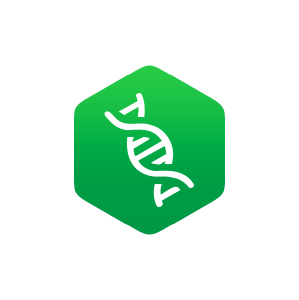Search
- Filter Results
- Location
- Classification
- Include attachments
- https://bio.libretexts.org/Courses/Mansfield_University_of_Pennsylvania/BSC_3271%3A_Microbiology_for_Health_Sciences_Sp21_(Kagle)/14%3A_Immunology/14.01%3A_Innate_Nonspecific_Host_Defenses/14.1.02%3A_Chemical_DefensesNumerous chemical mediators produced endogenously and exogenously exhibit nonspecific antimicrobial functions. Many chemical mediators are found in body fluids such as sebum, saliva, mucus, gastric an...Numerous chemical mediators produced endogenously and exogenously exhibit nonspecific antimicrobial functions. Many chemical mediators are found in body fluids such as sebum, saliva, mucus, gastric and intestinal fluids, urine, tears, cerumen, and vaginal secretions. Antimicrobial peptides (AMPs) found on the skin and in other areas of the body are largely produced in response to the presence of pathogens. These include dermcidin, cathelicidin, defensins, histatins, and bacteriocins.
- https://bio.libretexts.org/Courses/City_College_of_San_Francisco/Introduction_to_Microbiology_(Liu_et_al.)/20%3A_Innate_Immunity_1/20.04%3A_Chemical_Defenses_-_Antimicrobial_Peptides_(AMP)_and_Plasma_Protein_MediatorsThis page discusses antimicrobial peptides (AMPs), such as defensins and bacteriocins, which possess broad-spectrum properties against microorganisms. It highlights their various mechanisms of action ...This page discusses antimicrobial peptides (AMPs), such as defensins and bacteriocins, which possess broad-spectrum properties against microorganisms. It highlights their various mechanisms of action against bacteria, fungi, and viruses. Additionally, it mentions antimicrobial proteins in plasma, particularly acute-phase proteins like C-reactive protein and ferritin, which are vital for the innate immune response and aid in inhibiting pathogen growth and promoting phagocytosis.
- https://bio.libretexts.org/Courses/Prince_Georges_Community_College/PGCC_Microbiology/06%3A_Immunology/6.02%3A_Non-Adaptive_ImmunityNumerous chemical mediators produced endogenously and exogenously exhibit nonspecific antimicrobial functions. Many chemical mediators are found in body fluids such as sebum, saliva, mucus, gastric an...Numerous chemical mediators produced endogenously and exogenously exhibit nonspecific antimicrobial functions. Many chemical mediators are found in body fluids such as sebum, saliva, mucus, gastric and intestinal fluids, urine, tears, cerumen, and vaginal secretions. Antimicrobial peptides (AMPs) found on the skin and in other areas of the body are largely produced in response to the presence of pathogens. These include dermcidin, cathelicidin, defensins, histatins, and bacteriocins.
- https://bio.libretexts.org/Courses/Folsom_Lake_College/BIOL_440%3A_General_Microbiology_(Panoutsopoulos)/06%3A_The_Immune_System_Nonspecific_and_Specific_Defenses/6.02%3A_Innate_Nonspecific_Host_Defenses/6.2.02%3A_Chemical_DefensesNumerous chemical mediators produced endogenously and exogenously exhibit nonspecific antimicrobial functions. Many chemical mediators are found in body fluids such as sebum, saliva, mucus, gastric an...Numerous chemical mediators produced endogenously and exogenously exhibit nonspecific antimicrobial functions. Many chemical mediators are found in body fluids such as sebum, saliva, mucus, gastric and intestinal fluids, urine, tears, cerumen, and vaginal secretions. Antimicrobial peptides (AMPs) found on the skin and in other areas of the body are largely produced in response to the presence of pathogens. These include dermcidin, cathelicidin, defensins, histatins, and bacteriocins.
- https://bio.libretexts.org/Courses/North_Central_State_College/BIOL_1550%3A_Microbiology_(2025)/20%3A_Innate_Immunity_1/20.03%3A_Chemical_Defenses_-_OverviewNumerous chemical mediators produced endogenously and exogenously exhibit nonspecific antimicrobial functions. Many chemical mediators are found in body fluids such as sebum, saliva, mucus, gastric an...Numerous chemical mediators produced endogenously and exogenously exhibit nonspecific antimicrobial functions. Many chemical mediators are found in body fluids such as sebum, saliva, mucus, gastric and intestinal fluids, urine, tears, cerumen, and vaginal secretions. Antimicrobial peptides (AMPs) found on the skin and in other areas of the body are largely produced in response to the presence of pathogens. These include dermcidin, cathelicidin, defensins, histatins, and bacteriocins.
- https://bio.libretexts.org/Courses/City_College_of_San_Francisco/Introduction_to_Microbiology_(Liu_et_al.)/20%3A_Innate_Immunity_1/20.03%3A_Chemical_Defenses_-_OverviewNumerous chemical mediators produced endogenously and exogenously exhibit nonspecific antimicrobial functions. Many chemical mediators are found in body fluids such as sebum, saliva, mucus, gastric an...Numerous chemical mediators produced endogenously and exogenously exhibit nonspecific antimicrobial functions. Many chemical mediators are found in body fluids such as sebum, saliva, mucus, gastric and intestinal fluids, urine, tears, cerumen, and vaginal secretions. Antimicrobial peptides (AMPs) found on the skin and in other areas of the body are largely produced in response to the presence of pathogens. These include dermcidin, cathelicidin, defensins, histatins, and bacteriocins.
- https://bio.libretexts.org/Courses/City_College_of_San_Francisco/Introduction_to_Microbiology_(Liu_et_al.)/20%3A_Innate_Immunity_1/20.06%3A_Chemical_Defenses_-_CytokinesThis page describes cytokines as soluble proteins facilitating communication in the immune system, influencing cell proliferation and apoptosis. They operate through autocrine, paracrine, or endocrine...This page describes cytokines as soluble proteins facilitating communication in the immune system, influencing cell proliferation and apoptosis. They operate through autocrine, paracrine, or endocrine signaling. Key classes include interleukins, chemokines, and interferons, each playing specific roles in immune modulation and infection response.
- https://bio.libretexts.org/Courses/North_Central_State_College/BIOL_1550%3A_Microbiology_(2025)/20%3A_Innate_Immunity_1/20.06%3A_Chemical_Defenses_-_CytokinesNumerous chemical mediators produced endogenously and exogenously exhibit nonspecific antimicrobial functions. Many chemical mediators are found in body fluids such as sebum, saliva, mucus, gastric an...Numerous chemical mediators produced endogenously and exogenously exhibit nonspecific antimicrobial functions. Many chemical mediators are found in body fluids such as sebum, saliva, mucus, gastric and intestinal fluids, urine, tears, cerumen, and vaginal secretions. Antimicrobial peptides (AMPs) found on the skin and in other areas of the body are largely produced in response to the presence of pathogens. These include dermcidin, cathelicidin, defensins, histatins, and bacteriocins.
- https://bio.libretexts.org/Courses/City_College_of_San_Francisco/Introduction_to_Microbiology_(Liu_et_al.)/20%3A_Innate_Immunity_1/20.05%3A_Chemical_Defenses_-_Complement_SystemThis page discusses the complement system, a collection of over 30 plasma proteins involved in both innate and adaptive immunity. It can be activated via three pathways: alternative, classical, and le...This page discusses the complement system, a collection of over 30 plasma proteins involved in both innate and adaptive immunity. It can be activated via three pathways: alternative, classical, and lectin, culminating in the activation of complement protein C3, leading to C3a and C3b production.
- https://bio.libretexts.org/Courses/North_Central_State_College/BIOL_1550%3A_Microbiology_(2025)/20%3A_Innate_Immunity_1/20.05%3A_Chemical_Defenses_-_Complement_SystemNumerous chemical mediators produced endogenously and exogenously exhibit nonspecific antimicrobial functions. Many chemical mediators are found in body fluids such as sebum, saliva, mucus, gastric an...Numerous chemical mediators produced endogenously and exogenously exhibit nonspecific antimicrobial functions. Many chemical mediators are found in body fluids such as sebum, saliva, mucus, gastric and intestinal fluids, urine, tears, cerumen, and vaginal secretions. Antimicrobial peptides (AMPs) found on the skin and in other areas of the body are largely produced in response to the presence of pathogens. These include dermcidin, cathelicidin, defensins, histatins, and bacteriocins.
- https://bio.libretexts.org/Courses/Clinton_College/BIO_403%3A_Microbiology_(Neely)/06%3A_The_Immune_System_Nonspecific_and_Specific_Defenses/6.02%3A_Innate_Nonspecific_Host_Defenses/6.2.02%3A_Chemical_DefensesNumerous chemical mediators produced endogenously and exogenously exhibit nonspecific antimicrobial functions. Many chemical mediators are found in body fluids such as sebum, saliva, mucus, gastric an...Numerous chemical mediators produced endogenously and exogenously exhibit nonspecific antimicrobial functions. Many chemical mediators are found in body fluids such as sebum, saliva, mucus, gastric and intestinal fluids, urine, tears, cerumen, and vaginal secretions. Antimicrobial peptides (AMPs) found on the skin and in other areas of the body are largely produced in response to the presence of pathogens. These include dermcidin, cathelicidin, defensins, histatins, and bacteriocins.

